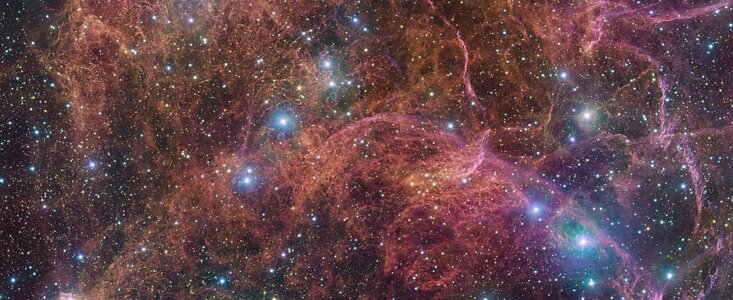Astronomical images never cease to delight, and the European Southern Observatory’s image of the Vela nebula is no exception.
In a stunning new image released developed by the VLT Survey Telescope, we can see wispy tendrils of gas, tangling into a complex web of filaments and knots. The whole gigantic structure is illuminated by the remnants of the dead star that created it.
The VLT Survey Telescope, hosted at the European Southern Observatories Paranal site in Chile, created this mosaic using its wide-field camera. Each image taken by the telescope contains over 268 million pixels, and this particular image is a mosaic of several different observations. In total nine full moons could fit across the width of the image.
The nebula was created about 11,000 years ago when a massive star died in a furious outburst known as a supernova explosion. This nebula sits only 900 light years away from Earth, and it’s the nearest supernova remnant to us. To create the nebula seen in the ESO’s new image, the star had to go through several different stages. Near the end of its life, right before the supernova, it ejected most of its outer layers and blue them away on strong stellar winds.
Then when the star finally exploded the shockwave raced through the nebula. That shockwave disrupted the nebula, causing it to fragment into many smaller filaments. At the same time it enriched the nebula with new material. Lastly, the shockwave blast energized and heated up the material in the nebula, which allowed it to start glowing on its own.
In addition to the light from the nebula, it is also receiving energy from the leftover remnant of the supernova, which is a compact neutron star that is just sitting outside the field of view of this image.
It’s a ghoulish site for sure, but it sure is beautiful.

